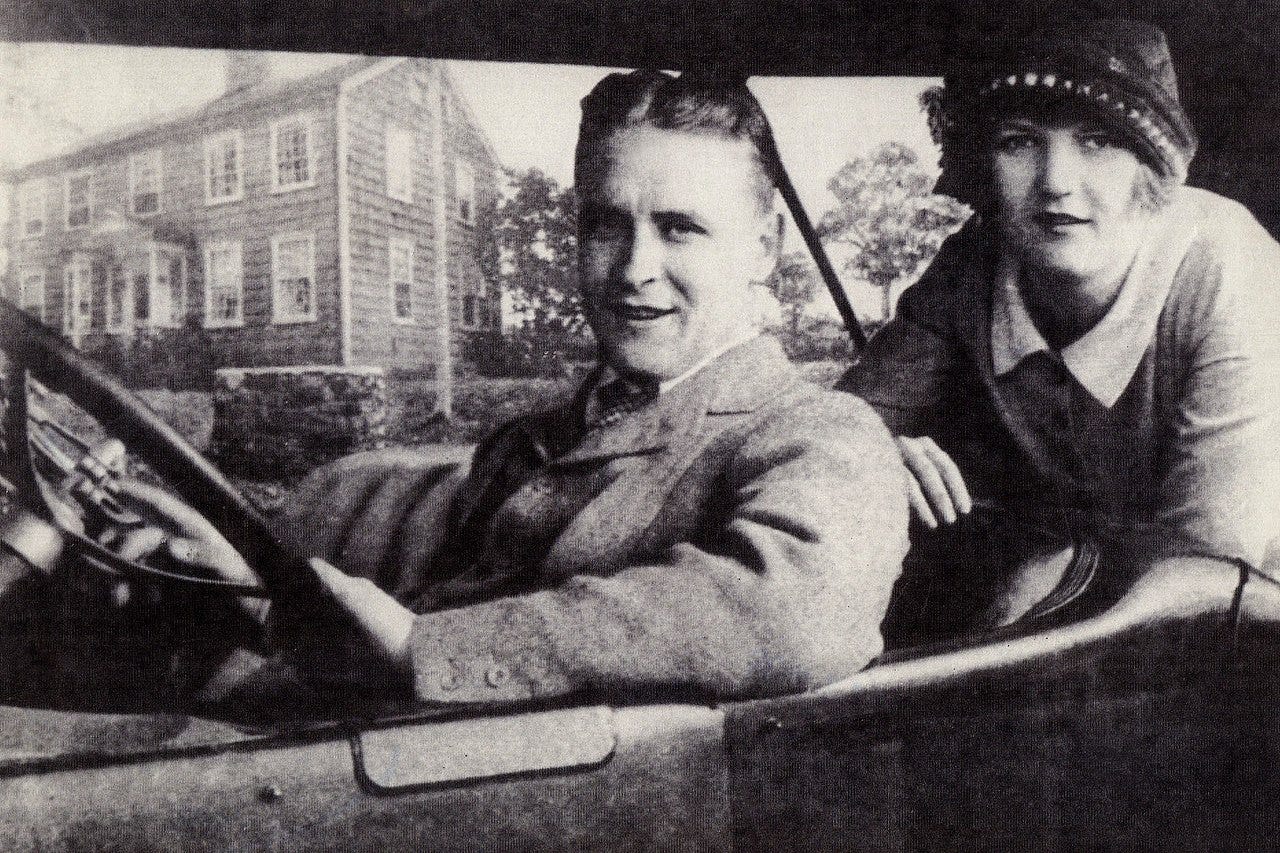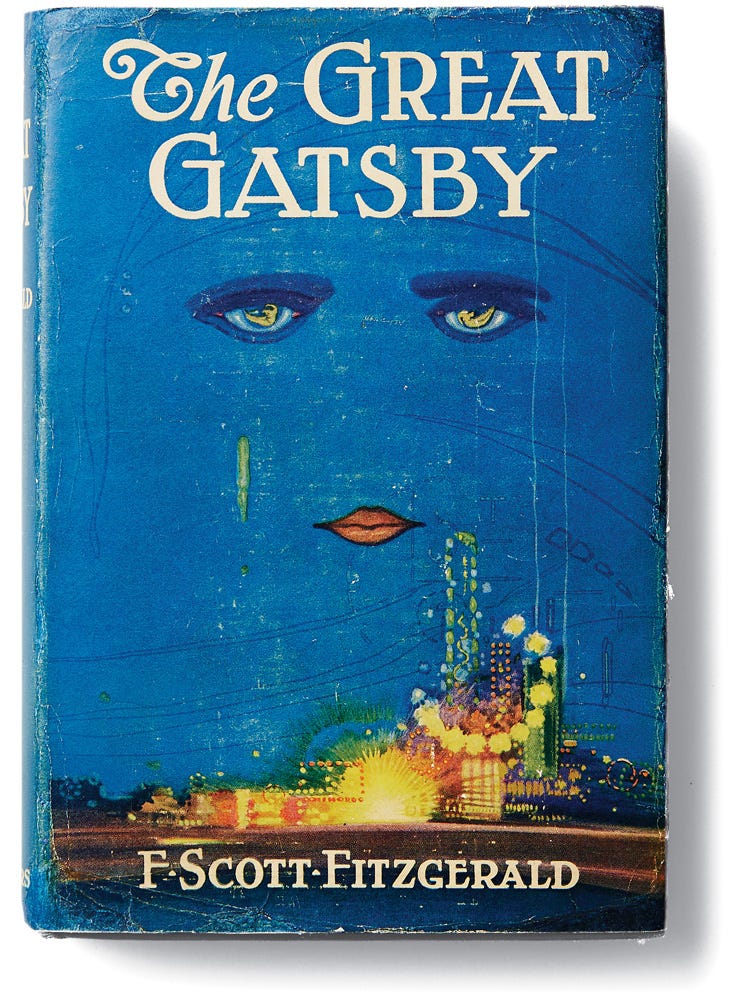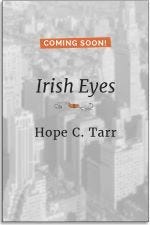On April 3, 1920, a newly famous young novelist married a sassy socialite from Montgomery, Alabama.
The newlyweds were F. Scott Fitzgerald, whose debut novel, This Side of Paradise had catapulted him to overnight fame, and Zelda Sayre. Together they were emblematic of their thrillingly bold and tumultuous era, the Roaring Twenties.
F. Scott and Zelda Fitzgerald, Spring 1920.
The newlyweds set up housekeeping in Manhattan where they embarked on a gin-fueled high life, bouncing between luxury hotels — both The Biltmore and The Commodore asked them to leave.1 In the wake of the Great War with all its staggering loss of life and innocence, the Fitzgeralds tapped into the desire of many young people to forget and have fun. Scott and Zelda’s kicky style, boozy bon mots and outrageous escapades — riding on the roofs of taxis, leaping into the fountain outside the Plaza hotel, dropping in at a morgue — only enhanced their national celebrity.2
In 1924, the couple moved to France, kicking up their heels in Paris and on the French Riviera with other American bohemian expats, including Dorothy Parker, Ernest Hemingway, Gertrude Stein, and Gerald and Sara Murphy. Amid alcohol fueled marital rows and perpetual partying, Scott did some of his finest writing, notably the The Great Gatsby (1925).3
Though Gatsby is arguably Fitzgerald’s best known work, the novel received mixed reviews at the time and was a commercial flop, performing so poorly that it was pulled from the Modern Library, then the parent company of Random House publishers.
By the late 1920s, multiple mental breakdowns (her), epic drinking binges (both, but especially him), repeated suicide attempts (her), affairs (probably both), violent arguments and tender reconciliations had worn down not only Scott and Zelda but nearly everyone in their orbit.
In 1930, Zelda was hospitalized for the first time, in Switzerland.4 She would spend the ensuing years through her tragic 1948 death in and out of sanitariums. Still, she managed an impressive creative output of novels, plays and paintings. Alas, the critics were not kind. Her semi-autobiographical novel, Save Me the Waltz (1932), written while in treatment at Johns Hopkins Hospital in Baltimore, MD, was roundly panned in its day.5 In more recent years, it has received more favorable treatment especially by feminist literary scholars.
In 1937, a cash-strapped Fitzgerald moved to Hollywood to reinvent himself as a screenplay writer. Unlike his contemporary, Dorothy Parker (“A Star is Born,” 1937), he found little success in La La Land. His drinking spiraled, extended binges punctuated by periods of relative sobriety. He began dating the British born gossip columnist, Sheilah Graham; eventually the two discreetly lived together.6
His time amid the Hollywood set led to a final novel, The Last Tycoon, published posthumously in 1941. On December 21, 1940, he died of a heart attack while staying with Graham.7 Though only forty-four years old, decades of hard living and disappointment had made him an old man.
Grave of F. Scott Fitzgerald and Zelda Sayre, Rockville, MD.
I first read The Great Gatsby in high school. At the start of the pandemic, I reread the novel and was struck by how fresh it still feels. Appetite whetted, I dove into more books on the 1920s, a happy pastime that became the foundation for a novel-in-progress. The sequel to IRISH EYES (December 2023), STARDUST follows Rose’s children and grandchildren through the interwar years in New York and Paris.
Recommended Reads:
Another Side of Paradise by Sally Koslow — Historical novel on Fitzgerald’s Hollywood romance with celebrity columnist, Sheila Graham.
Free As Gods: How the Jazz Age Reinvented Modernism by Charles A. Riley — Deep dive into the expat community in France during the Jazz Age, leading to a profusion of modernist masterpieces in art, literature and music.
Share this public post with other history lovers.
If you’re not yet subscribed to History With Hope, you can fix that here!
IRISH EYES, Book 1 of Hope’s new American Songbook series, spans twenty-five years of Gilded Age through the Jazz Age Manhattan, as seen through the eyes of spirited Irish-born Rose O’Neill. Read more here.
Bruccoli, Matthew J. (2002) [1981], Some Sort of Epic Grandeur: The Life of F. Scott Fitzgerald (2nd rev. ed.), Columbia, South Carolina: University of South Carolina Press, ISBN 1-57003-455-9 – via Internet
Ibid.
Turnbull, Andrew (1962) [1954], Scott Fitzgerald, New York: Charles Scribner's Sons, LCCN 62-9315 – via Internet
https://www.washingtonpost.com/entertainment/books/revisiting-the-love-story-of-f-scott-and-zelda-fitzgerald-in-their-own-words/2019/08/21/16e82c38-c41a-11e9-b72f-b31dfaa77212_story.html
Milford, Nancy (1970), Zelda: A Biography, New York: Harper & Row, ISBN 1-57003-455-9 – via Internet Archive
https://www.washingtonpost.com/entertainment/books/revisiting-the-love-story-of-f-scott-and-zelda-fitzgerald-in-their-own-words/2019/08/21/16e82c38-c41a-11e9-b72f-b31dfaa77212_story.html
Ibid






